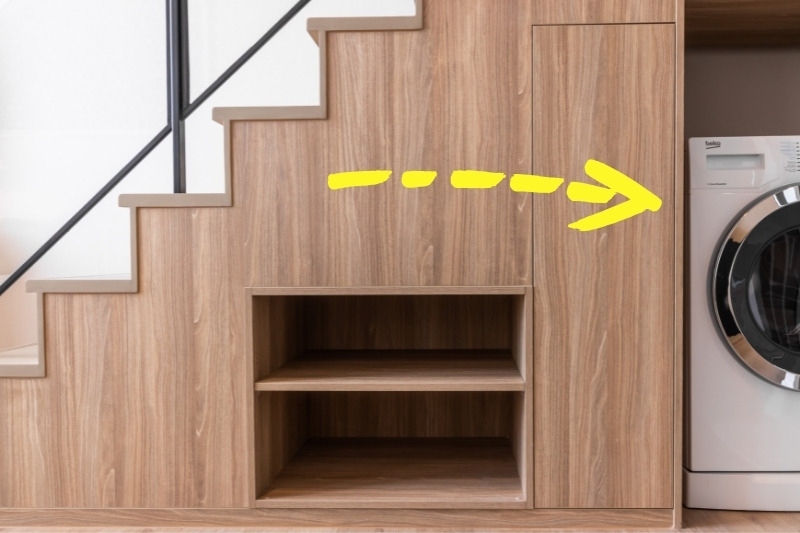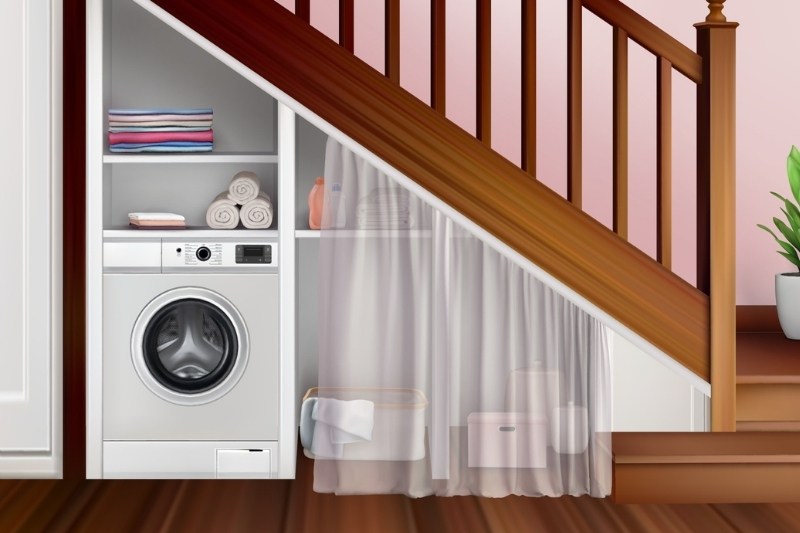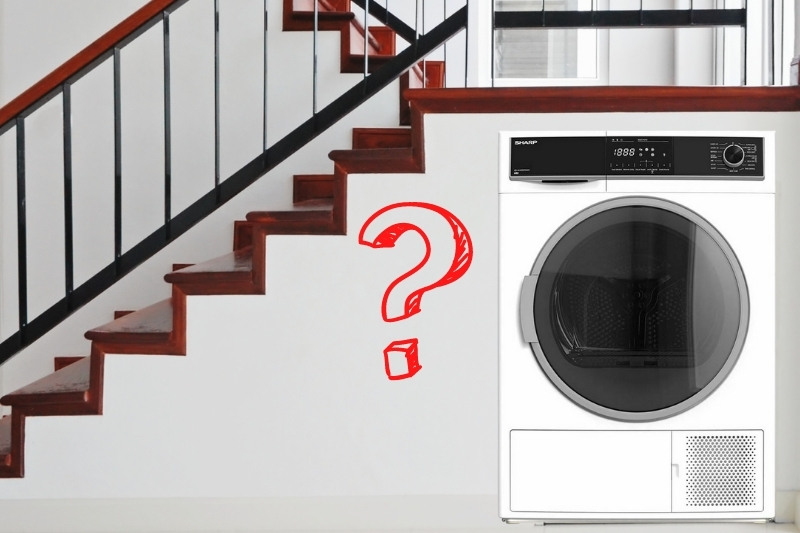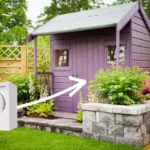Tumble dryers are very convenient devices that save you plenty of time and room when doing laundry.
Unfortunately, in many homes the space is so scarce that there’s no other option but to place the dryer in otherwise unused spaces, like the under the stairs.
But can you even have an electrical appliance there? And what about ventilation and noise?
From this article, you’ll learn whether it’s safe to put your tumble dryer under the stairs and how to install this device safely.
What Requirements Will Your Space Need to Meet?
Whether you can put a tumble dryer under the stairs depends on whether the space meets the requirements for the device to work safely.
If it fails to do so, installing a dryer in there could represent a fire and health hazard for your entire home. Here is what you need to check out before putting this appliance under the stairs.
Ventilation
Ensuring your tumble dryer has proper ventilation is crucial for preserving the safety of your home and your health.
Failing to do so could result in electrical fire or the spreading of mould, which leads to serious health complications.
Make sure you measure the space you have for the appliance and leave an adequate amount of space around it.
For most models, this means leaving plenty of room for opening the door, six inches behind the device, and 12 inches on each side.
Keep any flammable items, such as clothes, away from the perimeter of the dryer, and avoid placing your device on a carpet.
Another way to ensure proper ventilation for the dryer is to have the space open most of the time or by installing a vented door made from light materials that won’t get the heat trapped inside.
Space

While this requirement obviously ties into the one from above, there is much more to having enough space than size and ventilation.
You’ll need to ensure that the power outlet and the water outlet (if your model has one) are easily accessible, in case you need to turn them off in an emergency.
If you can’t provide enough space for all this, you should consider placing your tumble dryer in another spot for the same reasons described in the previous section.
Power supply
Your tumble dryer will need an individual circuit using nearby outlets. If you already have this in the space under the stairs, this is one less thing to worry about.
However, if you aren’t sure whether any outlet you have there is suitable for your device, feel free to consult an electrician.
They’ll also be able to tell you whether you can get the power there if you don’t have an outlet.
If you have experience working with electrical systems, you may evaluate the outlet yourself. You’ll need a transmitter and a receiver to help you create a map of the electrical line starting from the outlet.
Plug the transmitter into the outlet and take the receiver to the breaker box.
Open the box and look at the receiver to see which breaker the outlet is using and what voltage you have in that outlet. It should match the voltage predetermined by the dryer’s manufacturer.
Noise cancellation
Last but not least, you’ll need to consider the noise the machine will make while drying your clothes – and not only because it can be annoying.
The sounds cause vibrations, and as the vibrations are carried through anything the dryer touches. Over time, this can weaken the structure of your home, beginning with the stairs.
Fortunately, there are plenty of options to avoid this.
The least expensive one is to attach stabilisers to the feet of the machine, which will also contribute to its proper function and longevity.
However, they won’t actually eliminate the sounds, which means that if the stairs are in a heavily frequented room, you’ll still have plenty of noise and vibrations to deal with.
You can use audio foam, egg-crate foam, wedge foam, or Command strips on the door, the ceiling, and the walls of your space to eliminate some of the noise.
Professional soundproofing is another option, although it’s a rather expensive one.

Choosing a Dryer That Fits the Requirements
Tumble dryers come in many shapes and sizes. Some are condensers, while others are vented or have a heat pump.
They are also categorised by their power source, with electric or gas-sourced ones being the most popular options.
The former is particularly suitable for modern homes, as most of them have an electric supply system already in place.
Aside from this, the dryer may be front, side, or top open models, freestanding or integrated ones, or semi-integrated models with easily accessible control panels.
Each different category has its own benefits and drawbacks, so make sure to consider all your options before opting for one.
Most Common Dryer Types
Vented dryers
These dryers use a hose connected to an air vent for directing evaporated moisture from the dryer outside.
While these tend to be the least expensive option, they require you to provide access to an outside wall which may not be feasible if your stairs are located in the middle of your home.
Portable dryers
These models are created to fit the smallest places possible. However, despite being much smaller, they cost as much as regular-sized models.
Condenser dryers
The main benefit of these appliances is that they do not require a vent because they collect the moisture in a container that you can empty into the sink.
They also allow for more suitable placement as you won’t have to worry about water outlets.
Conclusion
While you can put a tumble dryer under your stairs, it definitely requires a bit of preparation. This small place can be the perfect hideaway for your dryer, but only if there is enough room for ventilation.
If there isn’t, you may still be able to resolve the issue by leaving the door of your space open to ensure proper ventilation.
In reality, most homes will not have enough room under their stairs for a tumble dryer as there won’t be enough ventilation.
Be very careful about placing one under there as, even with precautions, you may get a rapid build-up of mould. If you have a large under-stair area or can connect to an air vent, then you should be okay.

I’m a mother of three who loves going on fun adventures with my family. With three little ones, I’ve learned the hard way how to keep a busy home clean! I want to share my tips and tricks to make your life as easy as possible.






